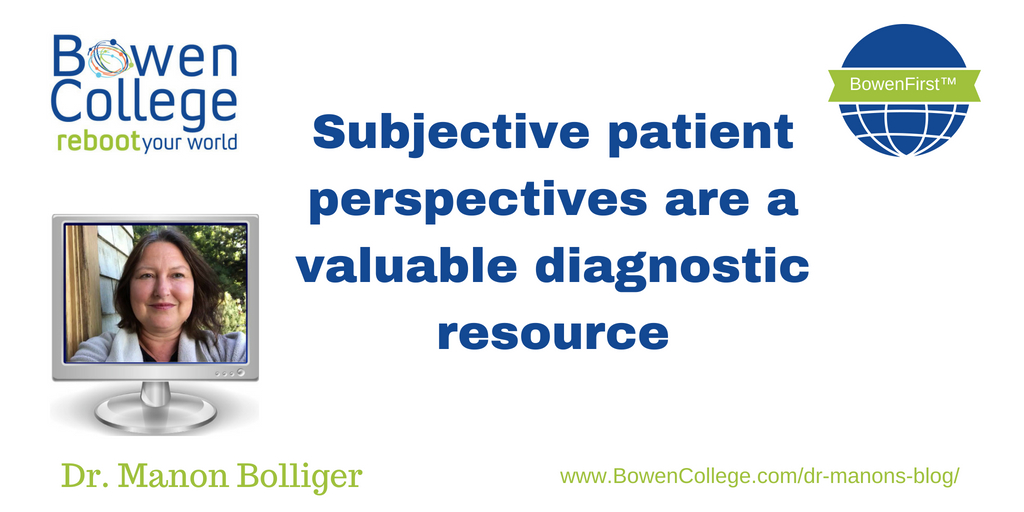In an earlier set of posts, I’ve addressed the SOAP formula (Subjective, objective assessment and plan) which is supposed to inform doctor note-taking with new patients. In the next set of posts, I want to explore the subjective-objective aspect of the SOAP formula more closely.
The “objective” part of the SOAP format is where the doctor states the “real” findings, which most commonly represent what meets the eye, and occasionally includes a description of the presenting nature of the patient. “A mild-mannered 64-year-old widowed man is limping and favouring his right leg,” would be an example. The objective perspective is from the doctor’s point of view. Without spending time deliberating over the basis of these loosely defined and arbitrary conceptual separations, I want to emphasize an exploration of the basis of subjective presentation of symptoms.
To be clear about our terms, “subjective,” as opposed to “objective,” refers to the findings presented by patients that are formed by their interpretation. Subjective implies a personal rendition, void of an “objective” or “scientific” basis. It is the account from the perspective of the patient.
As we’ll see though, the patient’s subjective presentation of symptoms does not exist in a vacuum. They often describe what they “have” based on what they “feel” is happening, or with fear of what they “think” is happening. This subjective insight, I want to suggest, is far more valuable and informed that it is often given credit for in the conventional approaches to SOAP.
In my next post, we’ll start to explore on what basis I’m making this unconventional claim. I look forward to seeing you there.









